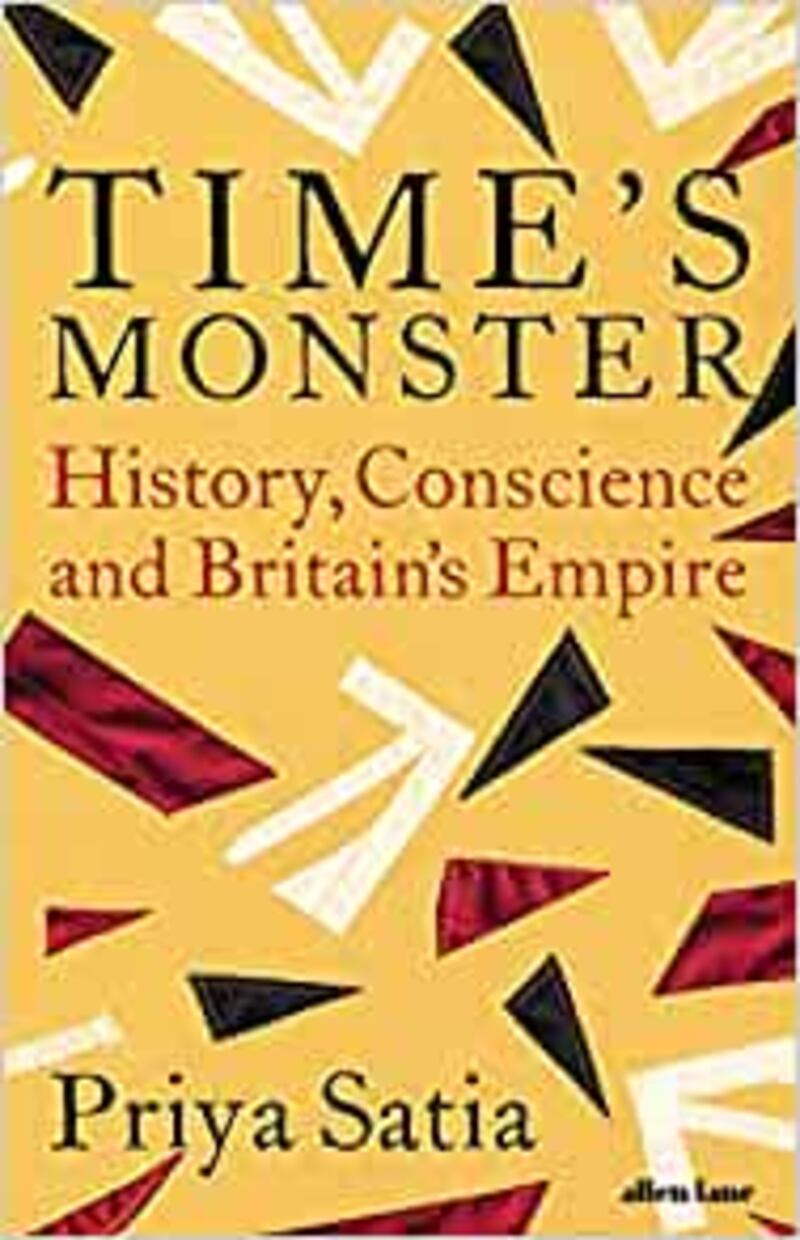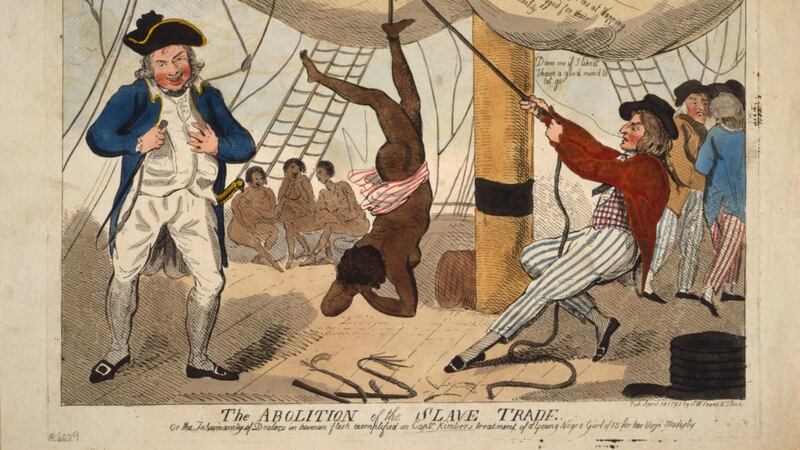It was no surprise that UK government ministers were quick to boast that theirs was the first country to have a vaccine for Covid-19. For this country has always been keen to advertise its exceptionalism, as attitudes to empire and slavery show. Opinion polls have found that, compared with other Europeans, more Britons see the empire as a good thing and superior to all other empires.
There is also much pride that on slavery the British occupy the moral high ground, having done more than any other country to abolish the practice. These two books go a long way to show what a farrago of nonsense such views are.
In Time's Monster: History, Conscience and Britain's Empire, Priya Satia, a professor of history at Stanford who sees Brexit as the result of Britain's imperial nostalgia, does not mince words when evaluating the British empire. She argues that it "was illegitimate – the imposition of an autocratic, racist, violent and extractive form of rule". To draw up a balance sheet of it would be like saying, "Hitler was horrible to the Jews, but, on the other hand, he built the autobahn."

Time’s Monster is not a narrative history of empire but a wider discussion of how the Enlightenment historical view that time moves irresistibly forward, as opposed to the circular theory of time of the Hindus, enabled historians to be the handmaidens of the empire and not just recorders and interpreters of events.
James Mill’s The History of British India, published in 1817, is the classic example. Mill never visited India, did not know any Indian languages but saw this as a badge of honour: “A man who is duly qualified may obtain more knowledge of India in one year, in his closet in England, than he could obtain during the course of his longest life, by the use of his eyes and ears in India.” From his closet he concluded that all Hindus were liars and their religion was obscure and inconsistent. “No people have ever drawn...a more gross and disgusting picture of the universe than what is presented in the writings of the Hindus.”
Mill’s purpose was to justify British rule in India. The East India Company gave him a cushy job and his history became the standard textbook for students at Haileybury College, where the civil servants of the company were taught before being sent out to India, and the alma mater of Clement Attlee. In 1827, when Lord William Bentinck left London to take over as governor-general in India, he told Mill: “I am going to British India, but I shall not be governor-general. It is you that will be governor-general.”
Mill retained his status as a historian of India long after the empire had gone, with his book lauded by the Oxford History of India as late as 1958.
Self-serving narrative
This power of history meant the British could construct a narrative of empire where they could always justify imperial rule as a force for good. The Victorian historian John Robert Seeley argued that Britain “conquered and peopled half the world in a fit of absence of mind”, implicitly absolving British of any blame. Heinous crimes were presented as individual acts by men gone bad, often seen as corrupted in the tropics, rather than the violence that was an essential part of imperial rule.
The Indian rebels of 1857 were portrayed as irritational criminal actors, and the brutality with which the British crushed the rebels was blamed on the Indians for provoking the British. Even Karl Marx, while acknowledging the moral right of the rebels to fight for their freedom, believed that India could not progress without European imperialism opening up closed Asiatic societies. Marx’s liberal rivals, as Satia puts it, “screwed their eyes shut and put their fingers in their ears, muttering ‘progress’ ”.

Satia’s passion can make her sound as much of a polemicist as Mill, except it is backed by the sort of wide-eyed knowledge that was shunned by Mill. At the end of the book I was left with the question of whether the British would be willing to properly examine how their ancestors behaved in the age of imperialism. That needs the British to overcome their imperial amnesia – something vital if the debate generated by the Black Lives Matter movement is to come to a satisfactory conclusion.
Role of slavery
To do that, of course, the British would also have to look at the role slavery played in the empire. And this would require – as Padraic X Scanlan, a history professor in Toronto, shows in his path-breaking Slave Empire: How Slavery Built Modern Britain – a major rewriting of history. The conventional view, much touted since the slave trader Edward Colston's statue in Bristol was torn down, is that Britain can be proud of being the first country to abolish slavery (in fact, Haiti and some northern US states did so earlier), and that royal navy ships hunted down slave ships.
The reality is the British abolition of slavery was a slow, tortuous process, with slaveholders who were members of parliament given plenty of opportunity to state their case. While the slave trade was abolished in 1807, it was 1833 before parliament passed the Slavery Abolition Act and even then the Act did not come into force until August 1st, 1834, the date being chosen as it was the first day of the sugar plantation season.

But even in 1834, the 800,000 British slaves scattered from the Caribbean to the Indian Ocean did not just walk away from the plantations to freedom. They had to serve six years of apprenticeship. The colonial secretary Edward Smith-Stanley said enslaved people could not leave the plantation and “recur to the primitive habits of savage life”.
And while some in the anti-slavery movement opposed apprenticeship, as Scanlan says, “they were united by a common faith in the power of the ‘better kind’ of white supremacy – the white power of missionaries and impartial administrators, rather than overseers and slaveholders – to remake the lives of freed people in Britain’s image”.
Emancipation was also meant to show the virtues of capitalism. In the words of the abolitionist Joseph Gurney, “We must prove that free labour is more economical and productive than slave labour”.
Slaveholders received compensation. The dying wish of William Wilberforce, the father of the anti-slavery campaign, who died before the Bill was passed, was that compensation be paid. Slaveholders had made piteous pleas that widows and orphans relied on income from the slavery plantations of the Caribbean.
Stanley supported this view, telling the Commons that the cost of ending slavery “cannot, in justice or fairness be borne by the planters” and “that the persons who have claims upon such property [meaning slaves] are amongst the most helpless classes of the community”. They received £20 million (£340 billion today), more than five times the combined GDPs of the today’s Caribbean countries. The government borrowed money from the Rothschilds.
Over generations the bonds were refinanced and divided. “Eventually”, writes Scanlan, “there were some 11,098 holders of compensation debt, who earned a total final redemption value of more than £218 million in 2015”, when David Cameron’s government redeemed the bonds.
Paying reparations to descendants of slaves, which some Caribbean countries are demanding, may sound ridiculous. But then it must also be accepted that the cost of ending slavery has been borne by our generation.












